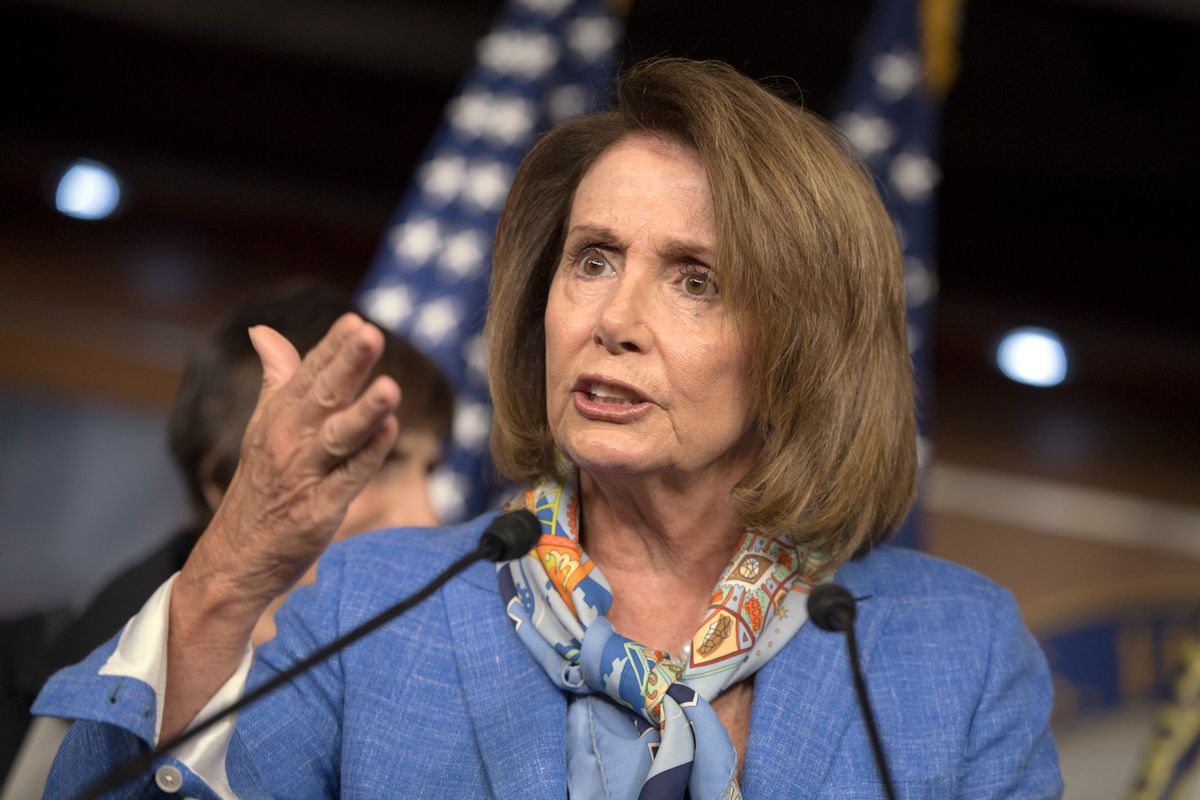Donald Trump’s hostile takeover of the Republican Party is necessitating big changes for the GOP now that he’s won the presidency. Across the partisan aisle, however, Nancy Pelosi’s overwhelming re-election as leader of the House Democrats suggests that her party’s leaders aren’t quite in the mood for switching things up.
Pelosi’s 134-63 victory means that — assuming she serves out her two-year term, through the 2018 midterms — she will have been the top House Democrat for 15 years, longer than chamber legends like Tip O’Neill (10) and Bob Michel (14).
Pelosi’s second-in-command and fellow septuagenarian, Minority Whip Steny Hoyer of Maryland, has held the top deputy position since 2003. They’ll be in good company, as next year’s Democratic House leadership has an average age of 72.
Despite the California Democrat’s easy victory, a challenge to her leadership indicates tensions within the party that aren’t likely to go away soon: The 63 votes received by Pelosi’s challenger, Tim Ryan of Ohio, were more than the 43 votes her last contender received in 2010. Part of the reason behind the nonrevolutionary discontent is the question of age, since the elderly nature of the House Democratic leadership is somewhat at odds with the party’s younger voting base.
Since 1992 when the Pew Research Center began tracking the age ranges of people who lean toward the two major parties, the majority citizens favoring the Democrats have been under the age of 50. By contrast, Xavier Becerra, the vice chairman of the House Democratic Caucus and the youngest leader in his party, is 58. Pelosi is 76.
While it may hamper her ability to connect with the young minority voters with whom Democrats are trying to build a winning coalition, Pelosi’s age may have helped her hold onto power this time around. At 43, Ryan is significantly younger than the average age of a House Democrat which is 59.
Throughout his long-shot bid, the Ohioan (no relation to Republican House Speaker Paul Ryan) emphasized that while he respected Pelosi’s service, he thought that a new strategy was needed in light of the party’s failure to reclaim a House majority after losing it in the 2010 election that swept many Tea Party Republicans into office.
“If you take state and federal officials, Democratic officials, we have the smallest number since Reconstruction,” he said in a Nov. 18 interview on MSNBC's "Morning Joe." “If that’s not a call for doing something differently, I don’t know what is.”
Tim Ryan also attacked party leaders for not competing well enough in races in middle America, a criticism he borrowed from former presidential candidate and Democratic National Committee chairman Howard Dean. Speaking with Rachel Maddow, Ryan argued that his party needed the ability “to win 30 or 40 congressional districts in the southern part of the country, in red congressional districts, southern Indiana, Ohio, Wisconsin, Michigan. We've got to win seats that are upstate New York.”
He also borrowed a page from liberal favorite Bernie Sanders (not officially a Democrat) and implied that Pelosi and other party leaders needed to learn to appeal to blue-collar workers who happen to be white. Democrats, he told Maddow, need to be willing to “represent the entire party":
It's not about one segment, it's about all of us. If you look back to the progress we made as a party and as a country, you know, worker rights and civil rights, you know, the 40-hour workweek, Medicare, Medicaid, Social Security, go through the whole list, that was when we were all together.
Like, we hung together as a party. Black, white, Latino, middle class, poor, we were all together. And that's how we made progress. And so whoever is the head of the DNC and I believe whoever is the head of our caucus needs to represent and understand that.
And I think Nancy Pelosi does. But we need to represent the entire party, and these working-class people rely on us.
According to reports, many House members were sympathetic to Ryan’s arguments but unpersuaded that he had a game plan to win. Pelosi also leaned on her experience and success in passing the landmark Affordable Care Act and the financial regulation law informally known as the Dodd-Frank Act. She also offered younger members a chance for more visibility and influence by saying she would create a new “vice-ranking member” position on many standing committees and reserve those slots for Democrats who had been in office for four terms or less.
Pelosi's fundraising prowess also served a substantial advantage. According to Politico, she brought in more than $100 million for her fellow Democrats in just this past election cycle, making her a "virtual piggy bank" for the party. Pelosi's ability to bring in big bucks may have something to do with her own wealth, which has been estimated at least $29 million.
The age situation for House Democrats is literally the opposite of what their Republican counterparts, led by 46-year-old Paul Ryan, are experiencing. Republicans in the House have an average age of 48. People who are inclined to vote Republican, meanwhile, are older than their House leadership. According to Pew, 58 percent of people who lean toward the GOP are over the age of 50.

Shares